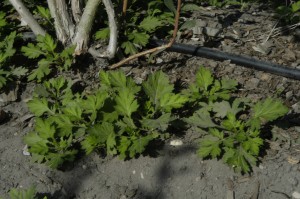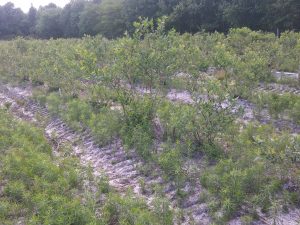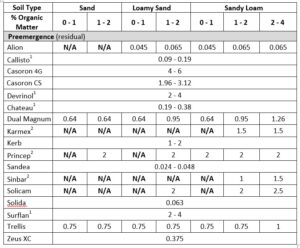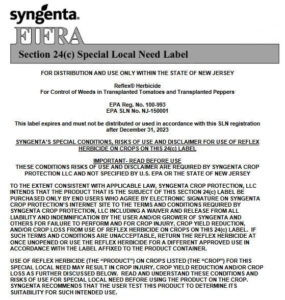Recently, New Jersey tree fruit growers have expressed concerns regarding the use of glufosinate for weed control in apple and peach orchards.
Glufosinate is a nonselective post-emergence foliar herbicide that can be used for directed applications around trees, vines, and berries. Glufosinate provides control of many annual broadleaf and grass weeds; however, control of large or well-tillered annual grasses, such as yellow or giant foxtail can be marginal. Glufosinate has no soil activity.
Work conducted by Dr. Brad Majek a few years ago indicated that direct application of glufosinate to the mature brown bark of the lower trunk may cause severe injury by killing the cambium layer at the point of contact (https://plant-pest-advisory.rutgers.edu/glufosinate-products-sold-as-rely-280-expand-as-generic-products-enter-the-market/). However, this type of injury is not systematically associated with glufosinate application as we observed it in a trial conducted in 2017 at the Snyder Research Farm on mature “Pink Lady” apple trees which were not damaged following glufosinate application (Rely 280 at 64 fl oz/A). Additionally, injury in the form of vertical cracks in the of trunk bark have also be observed on apple trees exposed to glyphosate (https://nyshs.org/wp-content/uploads/2016/10/Pages-23-28-from-NYFQ-Winter-12-12-2013.cmc_.pdf), not only to glufosinate.
As highlighted by Dr. Dave Rosenberg (retired Plant Pathologist at Cornell’s Hudson Valley Lab) on his blog (https://blogs.cornell.edu/plantpathhvl/2014/06/30/apple-summer-diseases-herbicide-problems-and-irrigation/), “NEITHER glyphosate nor glufosinate cause trunk injury to apple trees EVERY time that they are used or in every orchard in which they are applied”. Field reports suggest that injury is detected when trees are exposed to specific conditions that still need to be precisely defined. Dr. Rosenberg’s opinion is that “the potential for damage is significantly higher if tree trunks are hit with either of these herbicides during or just prior to periods of drought stress”. Under these drought conditions, “the additional desiccation from herbicide exposure may predispose the trunks to invasion by Botryosphaeria dothidea, a canker pathogen that is incapable of killing the cambium in healthy functioning trees, but which becomes very pathogenic in drought-stressed trees”. Dr. Rosenberg also suspects that similar injury can be observed on young trees following application of paraquat. Other stress factors, such as cold injury or previous bark damages, may also increase the risk of herbicide injury.
So, to safely apply glyphosate or glufosinate in peaches or apples, it is important following some guidelines that will help minimizing glyphosate or glufosinate damages to the bark:
- As specified by the label for glufosinate products and the Rutgers 2021-22 E002 Rutgers Tree Fruit guide, contact by the herbicide of parts of trees other than mature brown bark (including suckers) can result in serious damage. It is therefore especially important to protect young trees from potential glufosinate or glyphosate injury by wrapping them with grow tubes or waxed containers.
- For mature trees, the use of a shield boom is required for minimizing as much as possible contact between the herbicide spray and the tree bark. Shields will also minimize the bounce-back from bare soil that sometimes allows a haze of small droplets to drift upward into the trees.
- Avoid applications of herbicides during periods when trees are already experiencing water stress or where water-stress can be expected in the near future. Additionally, weed control efficacy of herbicides such as glyphosate of glufosinate can severely decrease when weeds are under heat stress.
- Keep the pressure as low as possible (no more than 30 psi) to minimize generation of small droplets. If not feasible, use air-induction nozzles to reduce the production of small droplets.
- Glyphosate should not be applied immediately after suckers are cut because it is readily absorbed by freshly cut stems.







